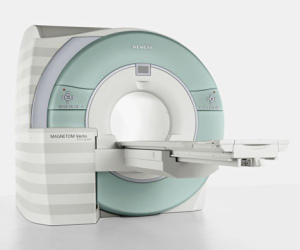by
Brendon Nafziger, DOTmed News Associate Editor | September 16, 2009

Imaging technology might
give doctors a direct
but non-invasive way
to monitor the health
of insulin-making beta cells
MRI and other imaging technologies could help doctors diagnose and treat diabetes, according to a study published in the August issue of the American Journal of Roentgenology. Researchers at Massachusetts General Hospital believe MRIs could finally offer doctors a direct method of checking the health of the pancreas and the beta cells that produce insulin.
Currently, doctors check pancreatic well-being and diagnose diabetes indirectly, through tests of blood biochemistry, such as fasting glucose
levels. But by the time changes to the blood chemistry show up, it's too late for patients with type 1 diabetes, says Anna Moore, Ph.D., co-author of the study and director of the Molecular Imaging Laboratory at the hospital.



Ad Statistics
Times Displayed: 186622
Times Visited: 4999 For those who need to move fast and expand clinical capabilities -- and would love new equipment -- the uCT 550 Advance offers a new fully configured 80-slice CT in up to 2 weeks with routine maintenance and parts and Software Upgrades for Life™ included.
"In type 1 diabetes, the autoimmune system attacks your beta cells," she tells DOTmed News. "It happens way before any change in blood sugar. When you start seeing the change in blood sugar, the attack is done. The beta cells are damaged.
"If we could detect this attack before full-blown beta cell death," she continues, "then we could prevent it. We could possibly put these people on some kind of medication" before their beta cells die off.
Although imaging technology wouldn't be as useful in diagnosing patients with type 2 diabetes, because the disease process is so different, she
thinks MRI imaging could help doctors monitor how well patients respond to treatment, including a clinical procedure for type 1 diabetes patients called islet transplantation, where islets from a healthy pancreas are transplanted into the liver of the diabetic patient. As this procedure could disturb the transplant and lead to its failure, MRI imaging could help doctors non-invasively observe how well the new islets are faring.
Right now, doctors are not able to image functional beta cell masses, Dr. Moore says, but she's hopeful that labs working in Europe and the U.S. -- including hers -- will get there soon.
"There are [already] ways to image dying cells," says Dr. Moore, noting that these techniques have revolutionized cancer research. If it works on beta cell masses, "it would be an excellent method for diagnosis," she says.
Dr. Moore's lab uses a combination PET-MRI (called MR-PET), made by Siemens, with an MRI-compatible PET insert fitted into the machine, one of only two such devices in the world, she says.
Read the special MRI issue of DOTmed Business News; the September 2009 edition is now online.

